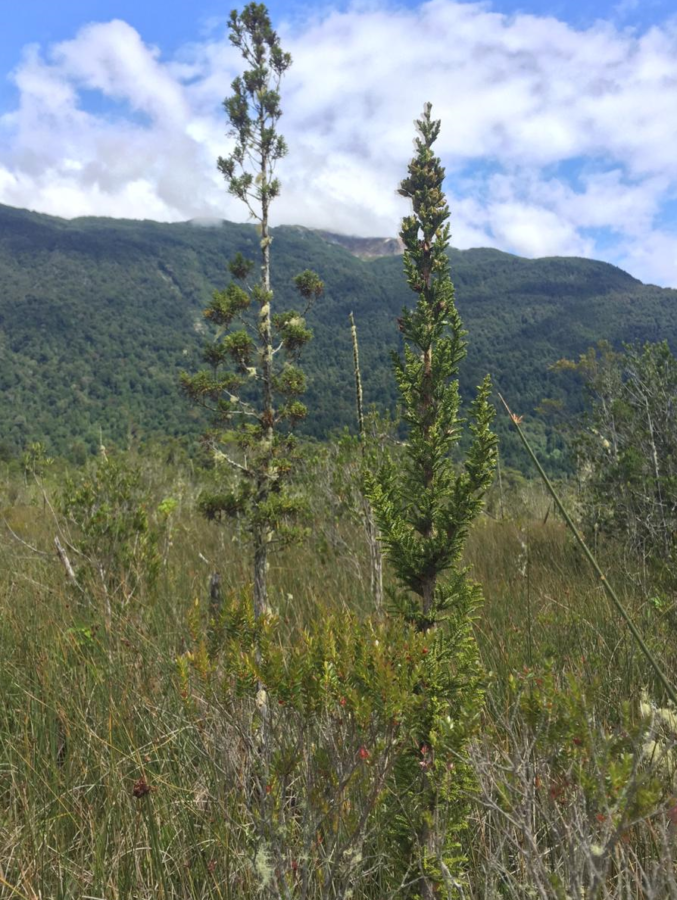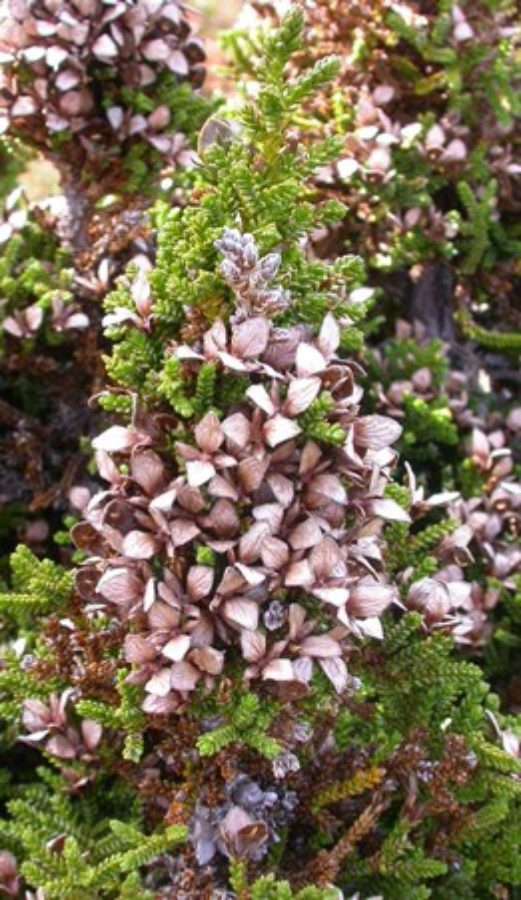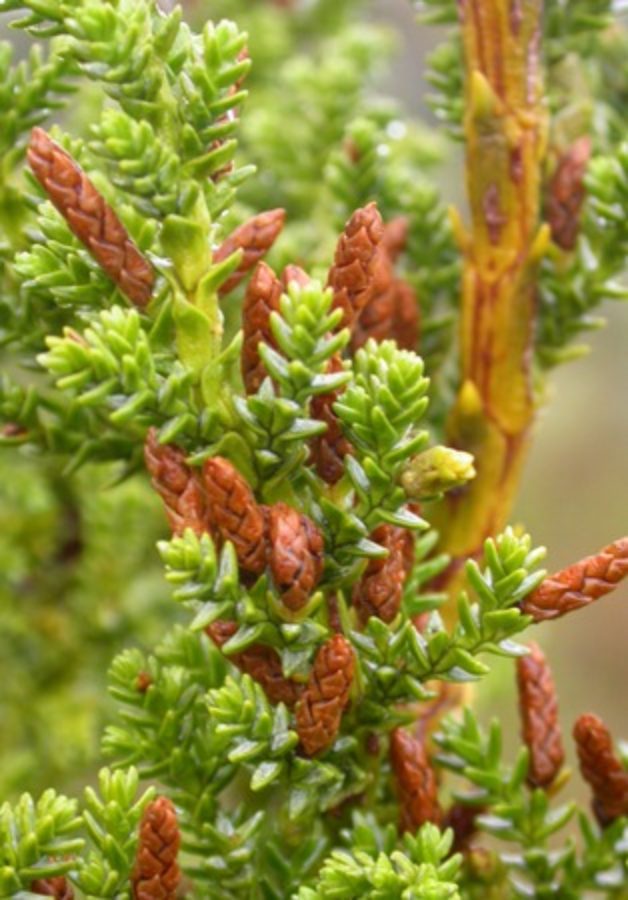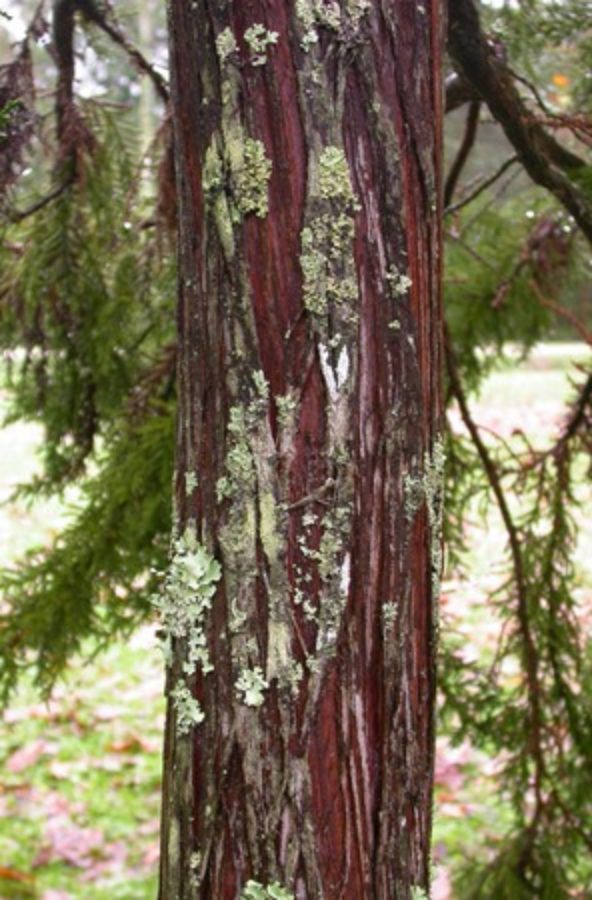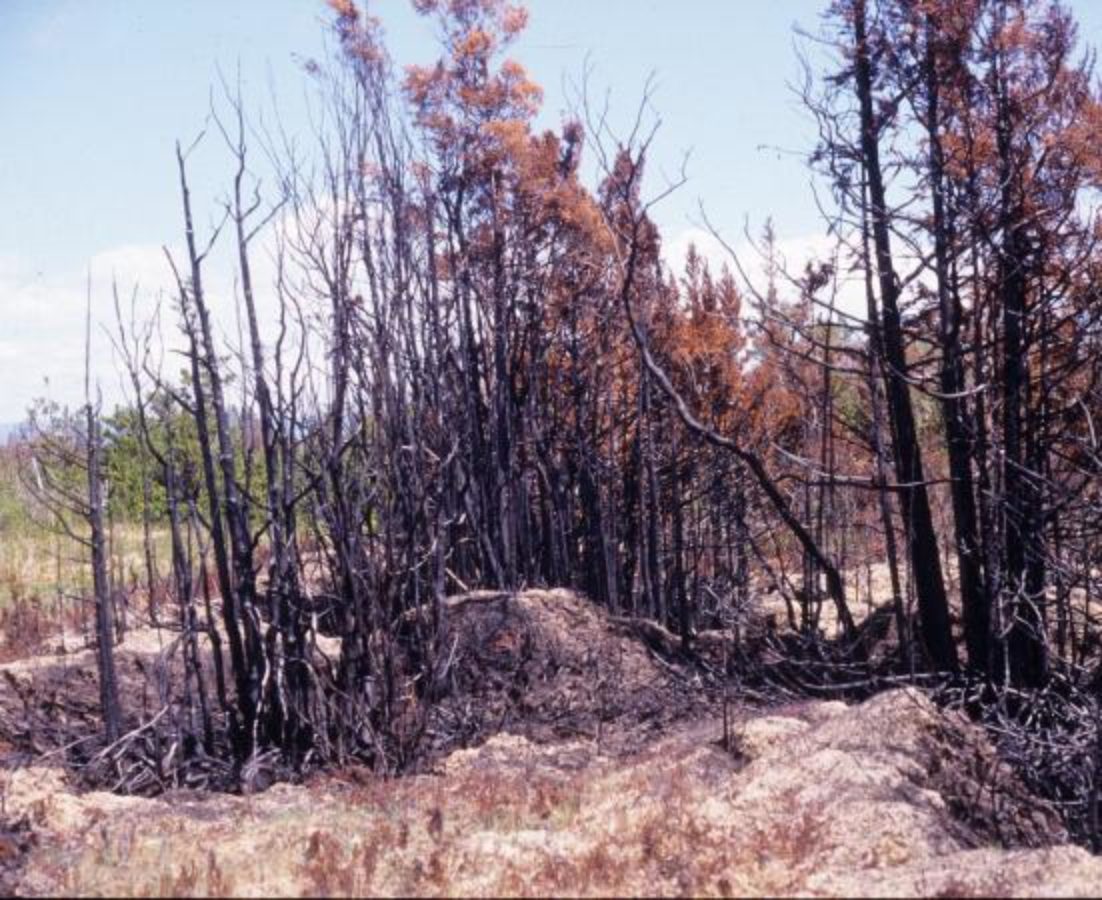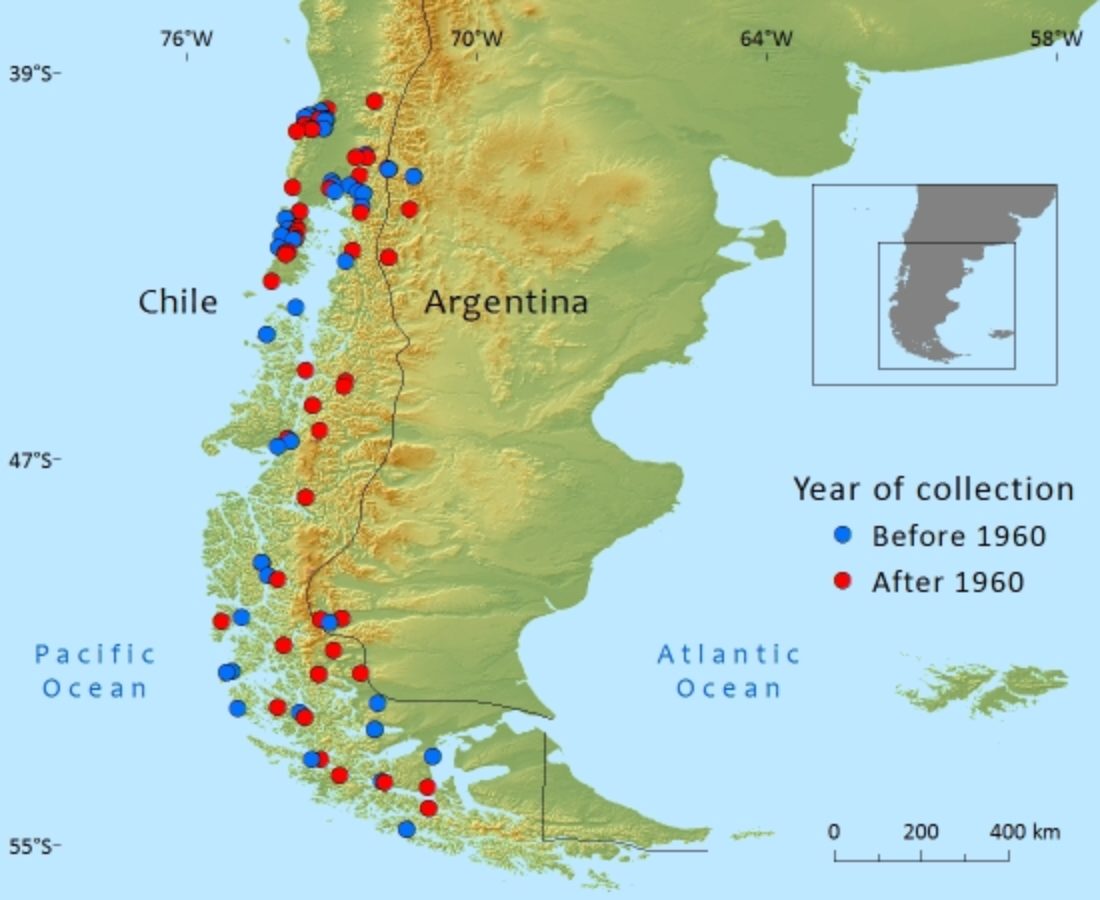Cupressaceae
Pilgerodendron uviferum
A genus with a single species endemic to southern Argentina and Chile, where threats include selective logging, grazing, fire and conversion of habitats to commercial plantations
Description
Habit
Monoecious evergreen tree to 20m, but often much smaller, trunk to 1.5m in diameter. Bark flaking, brown, becoming fibrous and fissured, exfoliating in long strips, weathering grey-brown. Branches spreading, rising at ends, forming a narrowly conical to pyramidal tree when young, maturing to a broad rounded crown.
Foliage
Leaves 2.5–6 x 1–2.2mm, regularly arranged in decussate pairs, incurved, triangular and keeled on the back, stomata on inner face, without stomatal bands on reverse.
Cones
Male pollen-cones 5–10 x 2–2.5mm, solitary, terminal, yellowish-green maturing yellowish-brown. Female seed-cones 8–12 x 4–6mm, valvate, ovoid, with two pairs of opposite scales, maturing October–December. Seeds 3–4 per cone, 3 x 1.5–2mm, pale yellowish brown, wings 2, of unequal size, maturing from December to March.
Key Characters
Pilgerodendron uviferum could be confused with Fitzroya cupressoides. In Fitzroya the leaves are usually arranged in alternating whorls and are of two types: scale-like and strongly keeled on mature branches, falcate and flattened on immature branches. All leaves have two obvious white stomatal bands on the underside. In Pilgerodendron the leaves are regularly arranged in decussate pairs, incurved, triangular and keeled on the back.
Human Uses
The timber of Pilgerodendron is decay resistant and has been heavily exploited for building and construction. In rural areas it is frequently used for bridges, poles, fencing, boats and furniture.
References and further reading
- Allnutt, T.R., A.C. Newton, A. Premoli & A. Lara. (2003). Genetic variation in the threatened South American conifer Pilgerodendron uviferum (Cupressaceae), detected using RAPD markers. Biological Conservation 114(2): 245-253.
- Bannister, J.R., C. Le Quesne & A. Lara. (2008). Structure and dynamics of Pilgerodendron uviferum forests affected by fires in the coastal range of Chiloe Island. Bosque 29: 33-43.
- Chebez, Juan Carlos. (1994). Los que se van. Buenos Aires, Argentina: Albatros.
- CONAF, CONAMA, BIRF, Universidad Austral de Chile, Pontificia Universidad Católica de Chile, Universidad Católica de Temuco. (1999). Catastro y evaluatión de los Recursos Vegetacionales Nativos de Chile. Informe Nacional con Variables Ambientales.. Santiago, Chile.
- Cruz, G. & A. Lara. (1981). Tipificación, cambio de estructura y normas de manejo para Ciprés de las Guaitecas (Pilgerodendron uviferum (D. Don) Florin,) en la Isla Grande de Chiloé. Tesis. Ingeniería Forestal. Facultad de Ciencias Forestales, Universidad de Chile. Santiago, Chile. 215 pp.
- Hechenleitner, P., Gardner, M.F., Thomas, P.I., Echeverría, C., Escobar, B., Brownless, P. and Martínez, C. (2005). Plantas amenazadas del Centro-Sur de Chile. Distribución, Conservación y Propagación. Universidad Austral de Chile y Real Jardín Botánico de Edimburgo, Santiago.
- Lara, A., C. Donoso, B. Escobar, A. Rovere, A. Premoli, D.P. Soto & J. Bannister (2006). Pilgerodendron uviferum (D.Don) Florin. En: C. Donoso (ed.), Las especies arbóreas de los bosques templados de Chile y Argentina. Autoecología. pp. 82-91. Valdivia, Chile. Marisa Cúneo Ediciones.
- Martínez, P.O. (1981). Flora and phytosociology of relict stands containing Pilgerodendron uviferum in San Pablode Tregua Farm. Bosque 4(1): 3-11.
- Plaza, J.L. (2001). Dinámica de renovales de Ciprés de las Guaitecas (Pilgerodendron uviferum [D.Don] Florin) en la zona de Lago Vargas, Provincia de Capitán Prat, XI Región. Tesis Ingeniero Forestal. Valdivia, Chile. Facultad de Ciencias Forestales, Universidad Austral de Chile. 78 pp.
- Premoli, A., C. Souto, T. Allnutt & A.C. Newton. (2001). Effects of population disjunction on isozyme variation in the widespread Pilgerodendron uviferum. Heredity 87: 337-343.
- Premoli, A.C., C.P. Souto, A.E. Rovere, T.R. Allnut and A.C. Newton. (2002). Patterns of isozyme variation as indicators of biogeographic history in Pilgerodendron uviferum (D.Don) Florin. Diversity and Distributions 8(2): 57-67.
- Rovere, A., Premoli, A. & Newton, A.. (2002). Estado de conservación del ciprés de las Guaitecas(Pilgerodendron uviferum (Don) Florín) en Argentina. Bosque 23(1): 11-19.
- Soto, D.P., Bannister,J.R., Ríos, A.I. & Le Quesne.,C. (2010). New records of threatened Pilgerodendron uviferum D.Don (Florin) in their northern limit in Chilean Coast Range. Gayana Botanica 67: 120-124.
- Soto, D.P., Le Quesne,C. Lara, A. & Gardner. M.F.(2007). Precarious conservation status of Pilgerodendron uviferum forests in their northern distribution in the Chilean Coastal Range. Bosque 28(3): 263-270.
- Souto, C., Premoli, A. & Gardner, M. (2013). Pilgerodendron uviferum. In: IUCN 2013. IUCN Red List of Threatened Species. Version 2013.1. <www.iucnredlist.org>. Downloaded on 07 July 2013.
- Szejner, P., Le Quesne, C., González. M.E., & Christie, D.A. (2011). Recuperación de bosques de Pilgerodendron uviferum (D. Don) Florin luego de perturbaciones antrópicas en la Cordillera de la Costa de Valdivia, Chile. Gayana Botánica 68, 196-206
